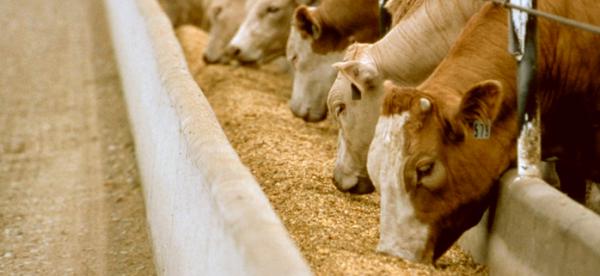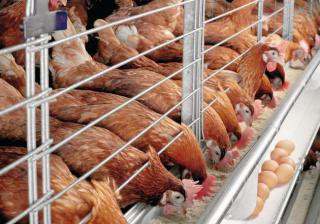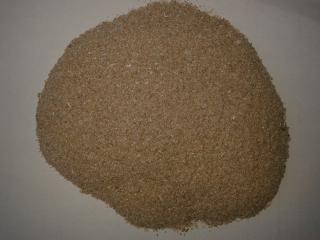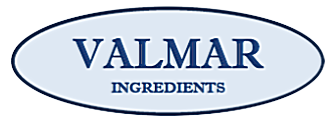Fodder Yeast
Inactive Dry Fodder Yeast - high-value protein-vitamin product. A microbial protein, synthesized by yeast, in digestibility and amino acid content exceeds animal protein, increases the biological value proteins other feed. Protein is digested fodder yeast in animals by 95%. Sulphur and its compounds are included in the composition, biological processes involved in the formation of amino acids. Enzyme catalysed processes of yeast assimilation of amino acids and protein synthesis. Phosphorus and calcium, the composition is in yeast promote normal development of skeleton. B vitamins that make up the yeast, are regulators of fat metabolism. Contraindications to the use of fodder yeast is not available. Overdose fodder yeast does not cause side effects. Application of the product does not affect the time of slaughter, and the use of milk. Fodder yeast type is determined by the strain of the fungus-producer and the environment of its cultivation. As producer strains feed protein using microscopic fungi genera Candida, Saccharomyces, Hansenula, Torulopsis, and others. They are one-celled organisms (fungi) are able to grow in a culture medium that contains sources of carbohydrate and minerals (N, P, K, Mg Ca, Fe, Mn, Zn, etc.), power, and dissolved oxygen. During the growth of the biomass in the fermentation yeast cell protein synthesis occurs.
 The raw material for nutrition environments include: hydrocarbon oil (refined liquid paraffins), lower alcohols (ethanol and methanol), hydrolysates of wood waste (sawdust, chips), hydrolysates with / agricultural wastes (straw, seed hulls, corn cobs, and so on. n.), sulphite liquor pulp and paper production, DDGS-hydrolysis and sulfite-alcohol production. Inactive Dry Fodder yeast increases the bioavailability of proteins in other feed by them contained in essential amino acids. The composition of these yeasts in the following amounts included all ten essential amino acids% of the dry matter of yeast: valine 3.1; Leucine 3.7; isoleucyl 3.5; arginine 3.2; lysine 4.4; threonine 2.5; methionine 3.0; tryptophan 0.3; tyrosine 4,2; histidine 1.4. On the content of amino acids fodder yeast similar to proteins of animal origin. To improve the efficiency of fixed vegetable protein resources is very important to introduce fodder yeast in the diet of animals. Feed yeast contains vitamins B and in this respect superior to all proteinaceous feed including fish meal. The natural combination of proteins in yeast and B vitamins are very important for the nutrition of animals and birds. These vitamins are closely related to protein metabolism in animals and are components of enzyme systems, catalyst activity necessary for the absorption of amino acids and protein synthesis.
The raw material for nutrition environments include: hydrocarbon oil (refined liquid paraffins), lower alcohols (ethanol and methanol), hydrolysates of wood waste (sawdust, chips), hydrolysates with / agricultural wastes (straw, seed hulls, corn cobs, and so on. n.), sulphite liquor pulp and paper production, DDGS-hydrolysis and sulfite-alcohol production. Inactive Dry Fodder yeast increases the bioavailability of proteins in other feed by them contained in essential amino acids. The composition of these yeasts in the following amounts included all ten essential amino acids% of the dry matter of yeast: valine 3.1; Leucine 3.7; isoleucyl 3.5; arginine 3.2; lysine 4.4; threonine 2.5; methionine 3.0; tryptophan 0.3; tyrosine 4,2; histidine 1.4. On the content of amino acids fodder yeast similar to proteins of animal origin. To improve the efficiency of fixed vegetable protein resources is very important to introduce fodder yeast in the diet of animals. Feed yeast contains vitamins B and in this respect superior to all proteinaceous feed including fish meal. The natural combination of proteins in yeast and B vitamins are very important for the nutrition of animals and birds. These vitamins are closely related to protein metabolism in animals and are components of enzyme systems, catalyst activity necessary for the absorption of amino acids and protein synthesis.
Fodder yeast - rich source of vitamin D2. Contained in the fat composition of yeast ergosterol (0,25-0,7% of abs. dry yeast biomass) under irradiation with ultraviolet rays is converted to vitamin D2. 1 kg of irradiated fodder yeast can bring the content of vitamin D2 of 5000-12000 international units. Ash of fodder yeast also contains valuable animals and birds macro- and microelements: phosphorus, potassium, calcium, iron, magnesium, sodium, sulfur, copper, cobalt and others. In general nutrition 1 kg of feed yeast containing up 1,03-1, 16 feed units, and especially a lot of digestible (true protein) - up to 380-480 g.
Fed animals and birds feed yeast in its natural form is not recommended, they can be consumed in the diet as the only protein-vitamin supplement. Significant research and long-term practice of feeding yeast proved their high efficiency. Experiments conducted in fattening pigs showed that the introduction of yeast into the feed in an amount of 8-10% by dry weight of the total animal feed increases the gain of 15-20%, and reduces the overall cost of feed per unit of weight gain of more than 10% shortens fattening pigs from 148 to 116 days. Most valuable are fodder yeast for breeding sows: improving their overall increases milk yield, reduced mortality of piglets.
 Fodder yeast can be successfully fed to calves and cattle. Yeast can replace 20-30% of the norm in the whole milk-fed calves and provide daily gain in 650-750 g, with the growing of calves 1 kg of yeast replaces 4-6 kg of milk and allows you to get up to an additional 320 grams of veal. Yeast increase milk yields by 3-3.5 liters per day and the fat content in it at 0.4-0.6%. Inactive Dry Fodder Yeast is a valuable feed for fur animals, replacing 30% of meat food. Systematic yeast feeding on fur farms led to increased resistance to animal diseases and significantly improves the quality of fur. Yeast increase trotting horses and endurance, reduce their fatigue. Especially effective is the use of fodder yeast in poultry farming. The bird is in need of protein feed containing vitamin B complex is especially necessary when the yeast cell for poultry, as well as in growing chickens. Adding fodder yeast in the diet in an amount of 5% of the total weight of the feed increases egg production of laying hens to 21-40% (depending on the breed chickens), and 10% - by 26-51%. A kilo of yeast given as feed ingredient to hens provides additional 30-40 eggs. Fodder yeast is successfully used in fish farming and beekeeping for feeding bees in early spring. Feed industry makes a high demand for fodder yeast. The formulation of feed for different kinds of livestock fodder yeast is 3-5% and protein concentrates for pigs 15-20%.
Fodder yeast can be successfully fed to calves and cattle. Yeast can replace 20-30% of the norm in the whole milk-fed calves and provide daily gain in 650-750 g, with the growing of calves 1 kg of yeast replaces 4-6 kg of milk and allows you to get up to an additional 320 grams of veal. Yeast increase milk yields by 3-3.5 liters per day and the fat content in it at 0.4-0.6%. Inactive Dry Fodder Yeast is a valuable feed for fur animals, replacing 30% of meat food. Systematic yeast feeding on fur farms led to increased resistance to animal diseases and significantly improves the quality of fur. Yeast increase trotting horses and endurance, reduce their fatigue. Especially effective is the use of fodder yeast in poultry farming. The bird is in need of protein feed containing vitamin B complex is especially necessary when the yeast cell for poultry, as well as in growing chickens. Adding fodder yeast in the diet in an amount of 5% of the total weight of the feed increases egg production of laying hens to 21-40% (depending on the breed chickens), and 10% - by 26-51%. A kilo of yeast given as feed ingredient to hens provides additional 30-40 eggs. Fodder yeast is successfully used in fish farming and beekeeping for feeding bees in early spring. Feed industry makes a high demand for fodder yeast. The formulation of feed for different kinds of livestock fodder yeast is 3-5% and protein concentrates for pigs 15-20%.
The application rates of fodder yeast Fodder yeast is added to the diet of animals as a protein and vitamin supplement, to feed animals and birds feeding in its natural form is not recommended. Dry fodder yeast mainly used in the animal feed industry. In formula feeds for different types of livestock fodder yeast is 3 - 5%, and protein concentrates for pigs - 15 - 20%. The average utilization rate is 1 g of dry yeast per day per 1 kg of animal body weight. Fodder Yeast used in the manufacture of feed for livestock and poultry. The powder product is fed directly to the mixer. The granulation product is crushed in a pre-crusher, and then also fed into the mixer. Optimal application rates of feeding yeast in feeds (by weight of feed): - Chickens – 2 to 3% - Pigs – 3 to 5% - Cattle – 6-10 %. Recommended standards of animal fodder yeast supplement per head per day (up to):
- • cattle (bulls and cows) ...................... . .......................500 g / day
- • young cattle ............................... .............................. 300 g / day
- • calves .......................................... ........................... 200 g / day
- • sow .................................... ......................................250 g / day
- • breeding gilts .............................................................200 g / day
- • gilts fattening ..................... .......................................150 g / day
- • horses ......................................................................500 g / day
- • foals .........................................................................300 g / day
- • adult bird ...................................................................5 g / day
- • chickens ....................................................................2 g / day
Characteristics of substitute products As such substitutes of fodder yeast protein does not exist. By amino acid composition and content of crude protein in feed yeast product is as close as possible to the fish meal (animal protein), soy and sunflower meal (vegetable proteins). However, the protein digestibility of animal protein is much better than the plant protein gluten. Proteins of fodder yeast and fish meal digested 89-90%, vegetable proteins are only 65-70%.
